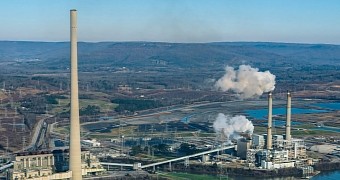Google has announced plans to open a new data center in Jackson County, Alabama, and will be doing it on the grounds of an old decommissioned power plant.
Google's state-of-the-art data center will replace the Widows Creek Fossil Plant, owned by the Tennessee Valley Authority (TVA), and located on the Guntersville Reservoir of the Tennessee River in northeast Alabama.
The power plant will officially shut down its last turbo-generator in October 2015, and construction on modifying the existing power plant facilities is expected to start next year.
The Widows Creek power plant has been in business since 1952, and at one point it had eight generators running. Due to regulatory changes and improvements to the energy market, the plant has become obsolete and was forced to stop its activities.
"Data centers need a lot of infrastructure to run 24/7, and there’s a lot of potential in redeveloping large industrial sites like former coal power plants. Decades of investment shouldn’t go to waste," said the official Google announcement.
According to the TVA press release, Google will be putting $600 / €535 million in the Widows Creek data center.
The same energy-efficient infrastructure will be used for this data center as well
This will be Google's 14th data center, and comes to follow similar facilities built in places like Finland, Belgium, Holland, Singapore, Iowa, and Georgia.
As with previous endeavors, Google will be using clean, renewable energy to power its data center, which it intends to purchase of the US energy market from TVA, the plant's previous owner.
Currently, Google is the world's largest green energy consumer, gobbling up 1.5% of the US' total wind power production.
The company also plans to stock the data center with its custom-made servers, renowned for their energy efficiency, currently getting 3.5 times more computing power from the same amount of energy as they did in 2010, 5 years ago.
This is done by using machine learning algorithms, a custom hardware architecture, and innovative cooling systems.

 14 DAY TRIAL //
14 DAY TRIAL //